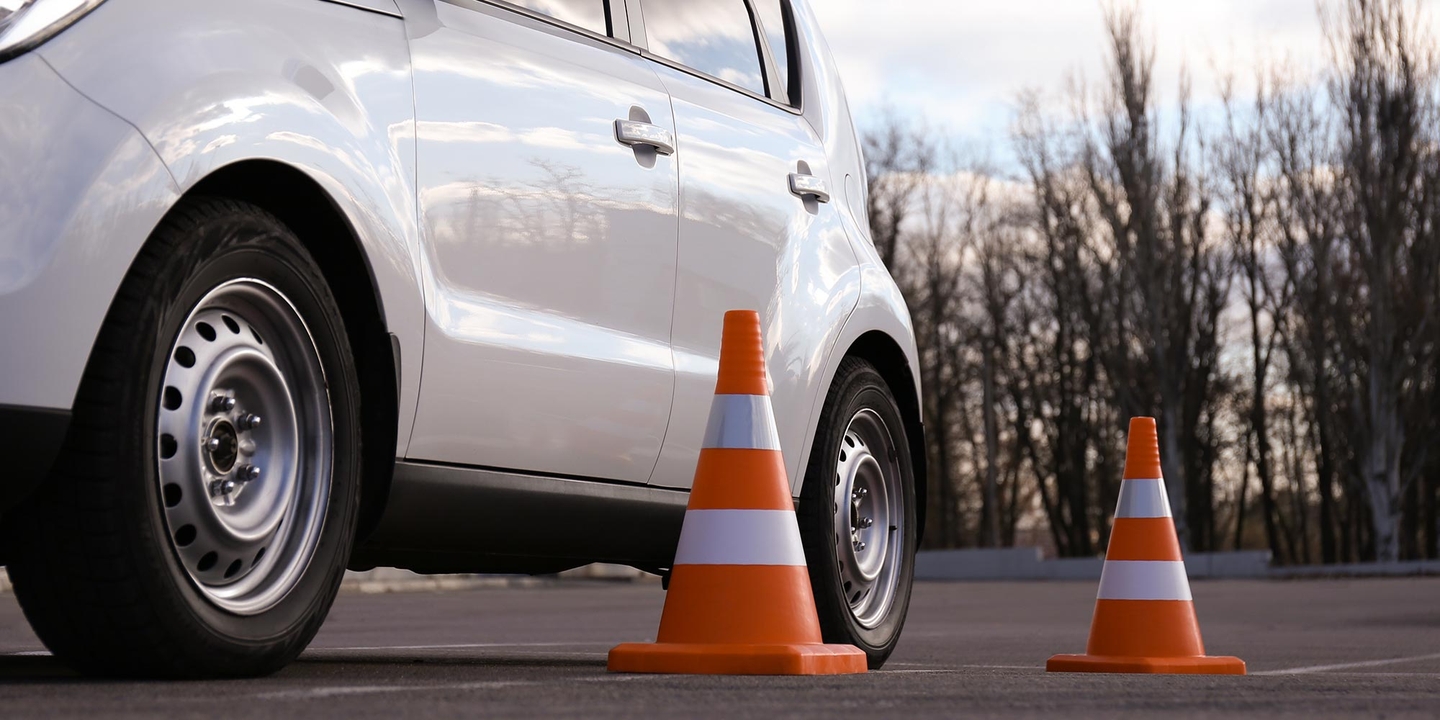
For many drivers, the mere thought of attempting to park in a tight spot can trigger a wave of anxiety, leading to a frustrating and often stressful experience. Whether it’s the fear of scraping another vehicle, the pressure of impatient drivers waiting behind you, or simply feeling like your skills are a bit rusty, parking challenges are a universal concern. But what if there was a way to transform this daunting task into a smooth, confident maneuver, every single time?
Imagine confidently navigating your car into that snug space, knowing exactly when to turn the wheel and how to perfectly align your vehicle. The good news is, mastering tight parking is entirely within reach. Driving experts and seasoned instructors have shared invaluable tips and systematic approaches that can demystify the process, empowering you to park with ease and precision.
This in-depth guide, inspired by the practical wisdom of driving professionals, will break down the complexities of parking into clear, actionable steps. We’ll explore various parking methods, from the often-dreaded parallel park to the straightforward angled approach, alongside crucial advice on assessing your environment and utilizing your vehicle’s features. Prepare to say goodbye to parking stress and hello to effortless precision!

1. **Driving Expert’s 4-Step Parallel Parking Hack: The TikTok Method**Parallel parking is arguably the most intimidating parking maneuver for many, often required in crowded city streets where space is at a premium. Yet, it’s a vital skill that, once mastered, opens up a world of parking possibilities. The RAC itself notes that parallel parking allows drivers to fit into tighter spots, unlike driving straight into a space, which often requires two empty slots side by side. By skilfully reversing, you can maximize the use of a single available space and, at times, parallel parking may be the only option to squeeze into a spot.
A driving expert, known as drivingschooltv0 on TikTok, has distilled this complex task into a straightforward, four-step method that promises to make parallel parking easy for anyone. This technique focuses on precise alignment and timely steering inputs, removing much of the guesswork. It’s designed to build confidence by providing clear reference points throughout the maneuver, ensuring you know exactly what to do at each stage.
The first step in this highly effective hack is to position your vehicle correctly. The driving guru instructs: “Get the back of your car in line with the back of the car you’re parking against.” This initial alignment is crucial, as it sets up the correct angle for your subsequent reverse. By matching your rear bumper with the parked car’s rear bumper, you establish a perfect starting point, giving you the necessary clearance for your initial turn into the space.
Once aligned, the next instruction is to: “Check around, steer all the way to the left.” Before initiating any movement, a quick scan of your surroundings ensures safety, checking for pedestrians or other vehicles. Turning the wheel fully to the left at this stage begins the angling process, guiding your car’s rear end into the parking spot. You then proceed by reversing slowly, maintaining full control and continually checking your mirrors.
As you continue to reverse, the expert advises: “When you can see the pavement-side lights of the car behind you, turn right and straighten up your wheels.” This visual cue is a critical reference point, indicating when to adjust your steering. Straightening your wheels at this moment helps to bring the front of your car into alignment with the curb and the other vehicles. The final instruction is simple and conclusive: “When the back of your car connects with the kerb then steer fully to the right. Straighten up and you’re done.” This last full turn to the right ensures your vehicle finishes perfectly parallel to the curb, centered within the space.

2. **Mastering Perpendicular Parking: A Step-by-Step Guide**Perpendicular parking, commonly found in most parking lots, involves positioning your vehicle at a 90-degree angle to the curb or an aisle. While it might seem simpler than parallel parking, perfecting it requires precision to avoid hitting adjacent vehicles or parking awkwardly. Our comprehensive guide breaks down this method into four manageable steps, ensuring you can pull into any spot with ease and confidence.
First, accurate positioning is key. As you approach the parking spot, “Position your car’s bumper with the first line of the parking space.” It’s recommended to keep your vehicle as far to the opposite side as you’re able to go so you have more room to turn. A useful trick is that when you look out your window, your shoulder should line up with the line on the parking spot before the one you’re pulling into. If lines aren’t present, aim for about 8 feet of space between vehicles. For right turns, stay in the middle of the lane and be mindful of oncoming traffic.
Once your bumper aligns, the next action is to “Lift off of the brakes and gradually turn your steering wheel.” Before moving, activate your turn signal to communicate your intent to other drivers. Slowly releasing the brake pedal allows your car to inch forward, while simultaneously turning the wheel hand over hand in your desired direction. Aim the front of your vehicle towards the middle or far side of the space, ensuring ample room to straighten out. Always double-check for any obstacles like shopping carts or debris in the parking space as you begin to pull in.
With your turn initiated, the third step is to “Pull into the space slowly.” Maintain your steering wheel’s turned position as your vehicle begins to straighten out within the parking lines. It’s crucial to ensure your entire vehicle is within the designated space, without any overhang that could impede other vehicles or pedestrians. A good check is to see if your side mirrors align with those of the cars parked next to you, indicating you’ve pulled in far enough. Also, be aware of spaces directly in front; if there’s one, make sure your car doesn’t extend into it, reversing slightly to reposition if necessary.
Finally, it’s time to “Straighten out your wheels to correct your position and park your car.” Once the sides of your vehicle are parallel with the parking space lines, return your steering wheel to its original, straight position. This ensures your tires are aligned for an easy departure. If you find yourself too close to a line, a simple correction involves slowly backing straight out of the spot and pulling back in with a slight steering adjustment to re-center your vehicle. When you eventually back out of the space, remember to use your turn signal and, when halfway out, turn your steering wheel in the direction you want the back of your vehicle to go. This methodical approach will help you achieve a perfect park every time.

3. **Effortless Angled Parking: A Simple Method for Quick Spots**Angled parking spots are typically designed for convenience and ease, often found in shopping centers and other high-traffic areas where quick entry and exit are prioritized. Their design naturally guides your vehicle into the space, but even with this advantage, a precise method ensures you avoid touching neighboring cars or occupying more than your fair share of space. This simple, four-step approach will make angled parking truly effortless.
Begin by setting yourself up for success. “Line up your front bumper with the first line of the parking space.” When approaching an angled spot, try to stay about 5–6 feet (1.5–1.8 m) away from the ends of the spaces. This provides sufficient room for your turn. If you’re practicing or feeling less confident, look for a spot away from other vehicles to reduce any potential stress. Before committing, always check the parking spot for any abandoned carts, trash, or other obstructions that might block your path.
Once your front bumper aligns with the edge of the parking space, press on your brakes to stop, then proceed to “Put on your turn signal.” This simple action is often overlooked but is crucial for communicating your intentions to vehicles behind you. In many lots with angled spaces, lanes are one-way, reducing concerns about oncoming traffic. However, signaling clearly prevents any confusion or sudden stops from other drivers who might otherwise be unsure of your next move.
With your signal on, it’s time to “Turn the wheel in the direction of the parking space and pull forward.” Spin the wheel approximately half of a turn, then slowly lift your foot off the brakes to allow your vehicle to gradually move forward. Maintain this turned wheel position, guiding your vehicle to angle smoothly into the space without crossing over the painted lines. A smart tip here is to aim for the middle of the parking spot, ensuring an even amount of space on either side of your vehicle as you progress.
As your vehicle settles into the spot, the final step is to “Straighten out your wheels when you’re halfway in the space.” As soon as about half of your vehicle has entered the spot, crank your steering wheel back to its original, straight position to align your tires. Continue pulling in slowly until your vehicle is completely within the parking spot. It’s important for your wheels to be straight so that you can back out of your spot easily and directly when you leave. Additionally, always make sure your vehicle doesn’t overhang the front, back, or sides of the spot, which could lead to a parking ticket or even a tow.

4. **Pre-Parking Assessment: Evaluating Space and Vehicle Dimensions**Before you even begin to maneuver, a critical step often overlooked is a thorough assessment of the parking space and your vehicle’s dimensions. This pre-parking evaluation is fundamental to a successful and stress-free parking experience, especially in tight conditions. Understanding the interplay between the available space and your car’s size allows you to plan your approach effectively and significantly reduces the risk of dings, scrapes, or unnecessary frustration.
Start by visually estimating or, if possible, even mentally measuring the key dimensions of the parking spot. You need to consider its length, width, and any potential clearance issues surrounding it. A good rule of thumb for “Space length” is to “Ensure the parking spot is longer than your vehicle by at least 1 to 2 feet to allow room for maneuvering.” This extra buffer provides the necessary space for adjustments and turns, preventing you from attempting to squeeze into an impossible spot.
Equally important is assessing the “Space width.” You must “Verify there is enough lateral clearance to open doors and avoid obstacles.” There’s nothing worse than perfectly parking your car only to find you can’t open your door wide enough to exit comfortably, or worse, that you’ve parked too close to a pillar or another vehicle. This verification includes looking at potential “Obstructions,” such as “any curbs, poles, walls, or other vehicles that could restrict movement.” These fixed elements can severely limit your turning radius and require extra caution.
Finally, don’t forget to check the “Surface conditions.” Things like “uneven ground, slopes, or slippery surfaces that may affect control” can significantly impact your ability to maneuver precisely. A slight incline or a patch of ice can make even a routine park challenging. Beyond the visual assessment, it’s wise to be familiar with your vehicle’s specifications. Different vehicle types have varying dimensions and turning capabilities. For instance, a compact car (13–15 ft long, 5.5–6 ft wide) typically needs 1–2 ft of clearance, while a large SUV/Crossover (16–18 ft long, 6.5–7 ft wide) might require 3–4 ft for comfortable maneuvering. Knowing these figures for your own vehicle will empower you to make informed decisions and avoid potential hazards.

5. **Essential Maneuvering Techniques for Tight Spots**Even with the best preparation and understanding of basic parking methods, extremely tight spaces sometimes demand more dynamic maneuvering techniques. When the margin for error is slim, employing specialized tactics can mean the difference between a perfect park and a frustrating attempt. Precision and control become absolutely paramount, and these techniques are designed to give you that critical edge. Always ensure your mirrors are properly adjusted to maximize visibility on all sides of the vehicle before you begin.
One invaluable strategy for challenging situations is the “Three-Point Turn” method. This technique comes into play “If you cannot back in directly, pull forward past the space, then reverse while steering sharply to angle the car into the spot.” It’s essentially a multi-step turn used to change the direction of a vehicle in a limited space. By strategically pulling forward and then reversing, you can achieve the necessary angle to guide your car into a spot that might otherwise be impossible with a single, direct maneuver. Always use slow, deliberate movements to minimize the risk of scraping or bumping adjacent vehicles or obstacles, and keep your initial distance of about two to three feet between your vehicle and the parked cars or boundaries for ample room to maneuver.
Another crucial technique, particularly when you find yourself partially in a spot but struggling for the final adjustment, is to “Employ the ‘Rocking’ Technique.” This method is useful “If stuck mid-maneuver, alternate between forward and reverse movements to inch your car into position.” By carefully shifting between drive and reverse gears, accompanied by small steering adjustments, you can gradually ‘rock’ your car into the desired alignment. This technique requires patience and controlled inputs, making sure each movement is small and precise. It’s a lifesaver when you need just a few more inches of space.
Modern vehicle technology can also be a game-changer. “Leverage Parking Sensors and Cameras” whenever available. These advanced aids “assist in judging distances and angles that may be difficult to see directly.” Rearview cameras provide a clear visual of what’s behind you, while parking sensors offer audible alerts about proximity to objects. These tools supplement your visual checks, enhancing your spatial awareness and reducing blind spots. However, remember they are aids, not replacements for your own judgment and careful observation, so throughout the process, maintain a slow speed and be ready to stop at any moment to reassess the position.

6. **Overcoming Common Parking Challenges with Confidence**Parking in tight spaces isn’t just about knowing the mechanics; it’s also about managing the inevitable challenges that arise. Limited visibility, narrow clearances, and the pressure from other drivers can transform a simple maneuver into a high-stress situation. Successfully navigating these common obstacles is essential for improving your success rate and, more importantly, reducing your overall parking anxiety. With the right strategies, you can approach any tight spot with a calm and collected demeanor.
Limited visibility is a primary culprit for parking woes. To mitigate this, first and foremost, “Adjusting side and rearview mirrors to minimize blind spots” is crucial. Make sure your mirrors give you the widest possible view of your car’s sides and rear. Additionally, “Utilizing technology such as rearview cameras and parking sensors” provides an invaluable extra set of ‘eyes’ and ‘ears.’ For extremely challenging scenarios, don’t hesitate to “Asking a passenger or bystander to guide you when possible.” A fresh perspective from outside the vehicle can provide crucial real-time feedback, making complex maneuvers much simpler and safer.
Narrow clearance presents another significant hurdle, demanding precise control. To tackle this, focus on “precise control of the steering wheel and careful measurement of distances.” This involves gentle, deliberate turns rather than abrupt movements. Moreover, “Use reference points on your vehicle, such as side mirrors or door handles, to gauge proximity to obstacles.” By familiarizing yourself with these points, you can develop an intuitive sense of your vehicle’s boundaries relative to curbs, lines, or other cars. This internal ‘mental map’ of your car’s dimensions is a skill that improves with practice.
The pressure from other drivers can be incredibly distracting and lead to rushed, costly mistakes. To counteract this, it’s vital to assert your intentions clearly and calmly. “Signal your intent early to alert others” that you’re preparing to park. More importantly, “Remain calm and take your time.” Don’t let impatient honks or glares rush you; your safety and the integrity of your vehicle are far more important. “If necessary, exit the vehicle to better assess the space.” A brief walk around your car and the spot can provide a much-needed perspective and reduce the chances of misjudgment. Remember, consistent practice in low-traffic areas and adopting a systematic approach are fundamental to mastering parking in tight spaces, allowing you to confidently tackle any challenge.



.jpg)
